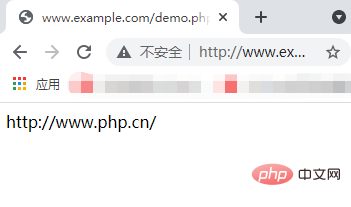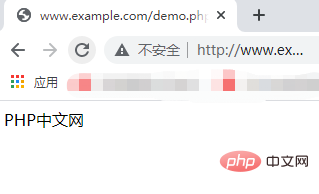
In the previous article "Five minutes will take you to understand the magic methods in PHP (detailed examples)", we introduced several common magic methods in PHP in detail. Let's take a look at this article. Let’s learn about constants in PHP. I hope everyone has to help!

In the previous study, we learned about the relevant knowledge of variables in PHP, including the declaration, characteristics and data types of variables. In PHP, there are not only variables There are also constants, and constants and variables correspond to each other.
Constants and variables are similar, but after a constant is defined, it cannot be changed elsewhere in the script, nor can it be undefined. Next let's take a look at the constants in PHP.
What are PHP constants
Constants correspond to variables. Constants are simply quantities that cannot be changed. They can be viewed as is an identifier of a simple value. It should be noted that, unlike variables, constants can be used throughout the entire script. They are automatically global, that is, they can be used throughout the script.
A constant is usually composed of numbers, English letters and underscores (_), but to be precise, the constant name of a legal constant must start with an underscore. The constant name There is no need to use the $ modifier for modification. Its naming is expressed by the regular expression we learned before:
[a-zA-Z_\x7f-\xff][a-zA-Z0-9_\x7f-\xff]*
When a data does not change or we do not want it to change There are changes, then we can use PHP constants for storage. The data types of such data may be: integer, floating point, string, Boolean and array types.
Definition of PHP constants and retrieval of values
There are two ways to set defined constants in PHP, they are const definition and define() function definition, as well as setting defined constants through the constant() function, we will introduce them separately next.
Definition of PHP constants
##1) <span style="font-size: 16px;"><strong>const<span style="font-size: 18px;"></span></strong></span>Keyword
const 常量名 = 常量值;
<?php
const url = '//m.sbmmt.com/';
echo url;
?>
##2) define()<strong><span style="font-size: 18px;"></span></strong>Function
The basic syntax format of the function is as follows: <div class="code" style="position:relative; padding:0px; margin:0px;"><pre class="brush:php;toolbar:false">define(string $name, mixed $value [, bool $case_insensitive = false])</pre><div class="contentsignin">Copy after login</div></div> It should be noted that the parameter
is a required parameter and is used to represent the constant name, that is, the identifier. Parameter $value is also a required parameter, used to represent the value of a constant. Parameter $case_insensitive is an optional parameter. When the parameter is set to TRUE, the constant is case-insensitive. By default it is case sensitive. Next, let’s take a look at the application of the define() function through an example. The example is as follows:
<?php
define('WebSite', 'PHP中文网');
echo WebSite;
?>Output result:
 Through the above example, you can understand that constants can be defined in PHP through the define() function and const. Next, let's take a look at how to get the value of a constant after defining it in PHP.
Through the above example, you can understand that constants can be defined in PHP through the define() function and const. Next, let's take a look at how to get the value of a constant after defining it in PHP.
Getting PHP constant values
##constant()<strong> <span style="font-size: 16px;"></span></strong> Function##After we have defined constants in PHP, we want To use this constant, you can use the constant() function. The basic syntax format of this function is as follows:
constant(string $name);
What you need to pay attention to is: parameter $nameNext, let’s take a look at how to use the constant() function through an example. The example is as follows Through the above introduction, we have learned that constants can be defined and set in PHP through the const keyword, define() function and constant() function. If you are interested, you can click on "PHP Video Tutorial" to learn more about PHP knowledge. The above is the detailed content of Let you understand the definition and value acquisition of PHP constants. For more information, please follow other related articles on the PHP Chinese website!<?php
define('WebSite', 'PHP中文网');
const url = '//m.sbmmt.com/';
$website = 'WebSite';
$url = 'url';
echo constant($website).'<br>';
echo constant($url);
?>




